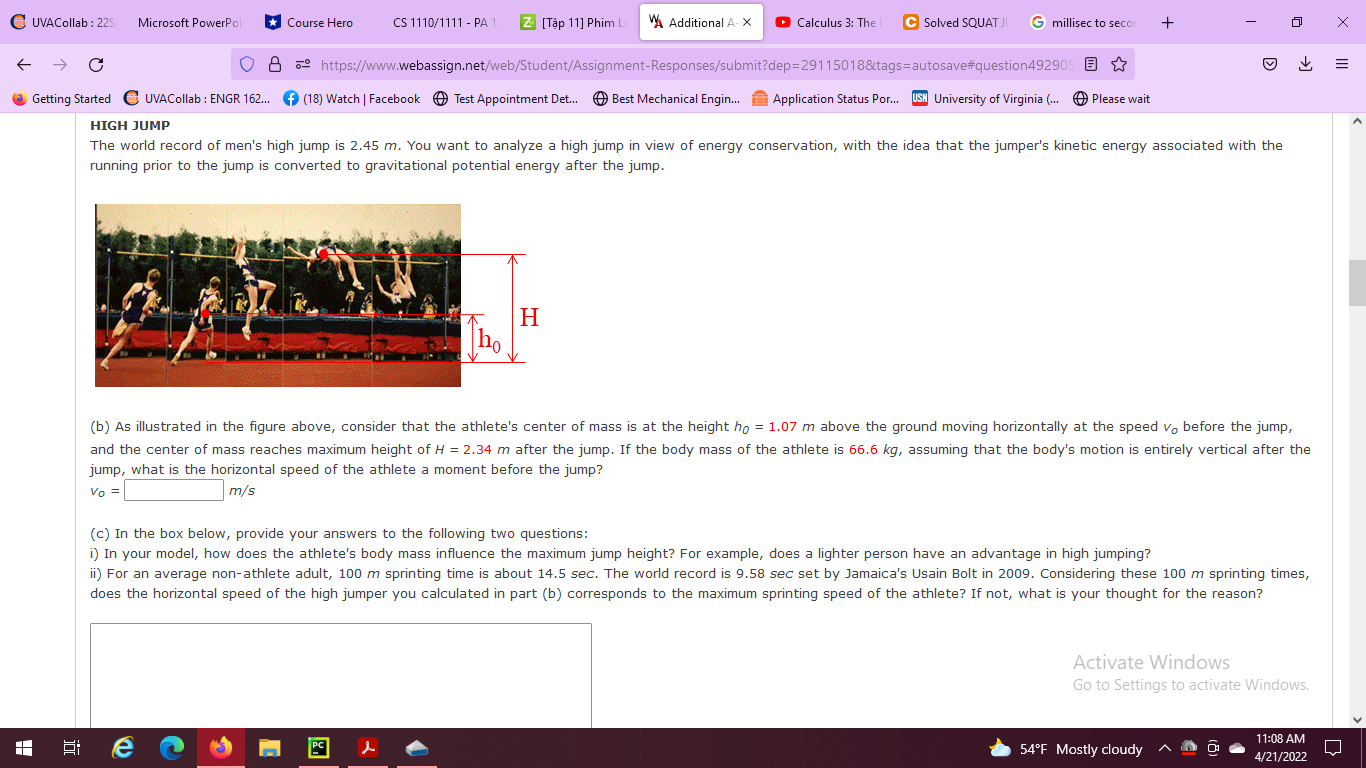Question
HIGH JUMP The world record of men's high jump is 2.45 m . You want to analyze a high jump in view of energy conservation,
HIGH JUMP The world record of men's high jump is 2.45 m. You want to analyze a high jump in view of energy conservation, with the idea that the jumper's kinetic energy associated with the running prior to the jump is converted to gravitational potential energy after the jump. (b) As illustrated in the figure above, consider that the athlete's center of mass is at the height h0 = 1.07 m above the ground moving horizontally at the speed vo before the jump, and the center of mass reaches maximum height of H = 2.34 m after the jump. If the body mass of the athlete is 66.6 kg, assuming that the body's motion is entirely vertical after the jump, what is the horizontal speed of the athlete a moment before the jump? vo = m/s (c) In the box below, provide your answers to the following two questions: i) In your model, how does the athlete's body mass influence the maximum jump height? For example, does a lighter person have an advantage in high jumping? ii) For an average non-athlete adult, 100 m sprinting time is about 14.5 sec. The world record is 9.58 sec set by Jamaica's Usain Bolt in 2009. Considering these 100 m sprinting times, does the horizontal speed of the high jumper you calculated in part (b) corresponds to the maximum sprinting speed of the athlete? If not, what is your thought for the reason?

Step by Step Solution
There are 3 Steps involved in it
Step: 1

Get Instant Access to Expert-Tailored Solutions
See step-by-step solutions with expert insights and AI powered tools for academic success
Step: 2

Step: 3

Ace Your Homework with AI
Get the answers you need in no time with our AI-driven, step-by-step assistance
Get Started


